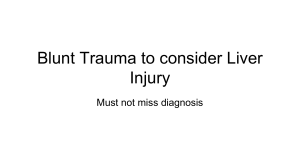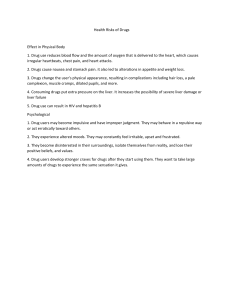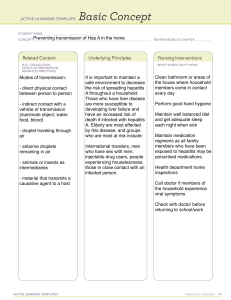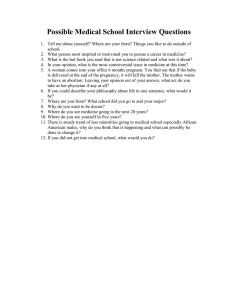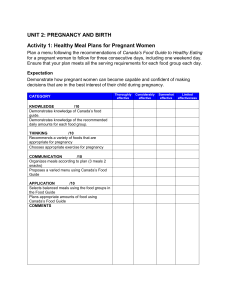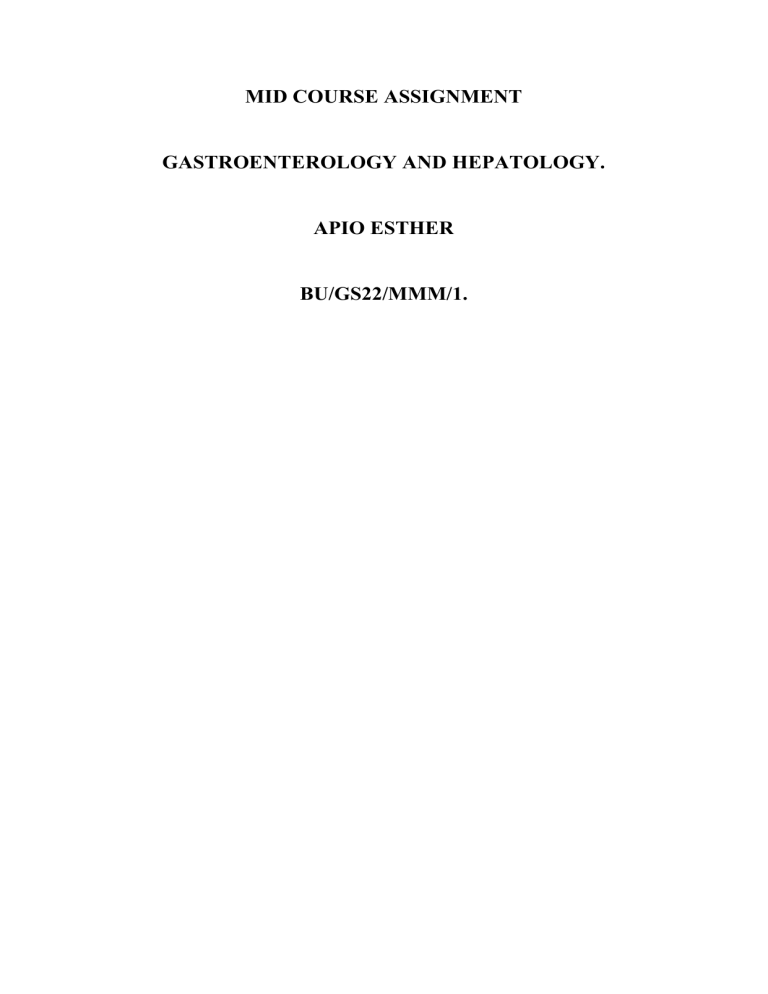
MID COURSE ASSIGNMENT GASTROENTEROLOGY AND HEPATOLOGY. APIO ESTHER BU/GS22/MMM/1. 1. Many systemic disorders can have gastrointestinal manifestations. Discuss an overview of these diseases about how they present in the gastrointestinal tract and liver. Systemic disorders can have gastrointestinal (GI) manifestations which are characterized by nausea, vomiting, diarrhea, constipation, abdominal pain, jaundice, and abnormal liver function tests. These gastrointestinal symptoms can be signs of various immunologic, infectious, and endocrine diseases and others as discussed below. Gastrointestinal Manifestations of Tropical Diseases The tropical diseases include, malaria, Leptospirosis, Enteric Fever, and Dengue Malaria: Gastrointestinal (GI) manifestations are common in malaria. These include dyspepsia, vomiting, diarrhea, hepatitis, gastrointestinal bleed, abdominal pain, subacute intestinal obstruction, and acute abdomen and few case reports of perforated duodenal ulcer. Jaundice can be mild or severe jaundice may occur in P. falciparum infection due to hemolysis, hepatocyte injury, and cholestasis. Hypoglycemia is a common complication of severe malaria. It occurs due to diminished hepatic gluconeogenesis, depletion of liver glycogen stores, increase in the consumption of glucose by the host (and, to a much less extent, the parasite). Enteric Fever: Enteric fever presents with loss of appetite and weight loss, coated tongue, abdominal pain, pea soup diarrhea, and marked constipation. Deadest GI complications are intestinal hemorrhage and perforation. Terminal ileum is most affected followed by the ileocecal valve, the ascending colon, and the transverse colon. Left side colon is least affected. In colon variable-sized punched out ulcers with elevated margin are found. Intestinal perforation occurs during the third week of febrile illness and is due to necrosis of the Peyer's patches in the antimesenteric bowel wall and is associated with high mortality rates. Others: we have Leptospirosis and Dengue may present with wide variety of GI and non-GI complications like nausea, vomiting, abdominal pain, acalculous cholecystitis, enteritis, pancreatitis, peritonitis, liver failure. Gastrointestinal Manifestations of COVID-19; gastrointestinal manifestations like nausea, vomiting, abdominal pain, and diarrhea were found in patient of COVID-19 Up to 60% patients develop liver impairment characterized transaminitis, elevated bilirubin, low serum albumin, and elevated alkaline. Gastrointestinal Manifestations of Endocrine Disease; patients with diabetic ketoacidosis (DKA) presented with gastrointestinal symptoms such as nausea, vomiting, abdominal pain, and abdominal distention and are acute in onset in contrast to intermittent abdominal pain over days to weeks in intraabdominal disorder. The mechanism of gastrointestinal symptoms is due to central neurogenic response the ketoacidosis, gastric atony, generalized ileus, increased level of counter regulatory hormones such as glucagon and catecholamines, gastritis, or pancreatitis. These symptoms resolve with fluid therapy and insulin. Gastrointestinal Manifestations in Thyroid Disorder; hyperthyroid patients have gastrointestinal symptoms that range from frequent bowel movements, diarrhea, chronic dyspeptic symptoms such as epigastric pain and fullness, nausea, and vomiting and intractable vomiting. There is gastrointestinal motor dysfunction manifested as altered intestinal motility and decreased intestinal transit time in hyperthyroidism. Dysphagia is due to direct compression of thyroid on oesophagus and myopathy of striated muscles of pharynx and oesophagus. Dysphagia resolves on correction of hyperthyroidism. Long-term untreated hyperthyroidism can lead to cirrhosis. Graves’ disease patients are at increased risk of coeliac disease and ulcerative colitis. Some case reports of primary biliary cirrhosis reported in graves’ disease. Severe hypothyroidism may lead to disturbance in oesophageal peristalsis like dysphagia, decreased appetite, but there is weight gain because of decreased metabolism and water retention. We may have severe ileus and pseudo-obstruction, diarrhea due to bacterial overgrowth syndrome and Severe upper gastrointestinal bleeding refractory to usual treatment also reported in severe hypothyroidism. Myxoedema ascites is found in some long-standing case of hypothyroidism which is characterized by serum to ascites albumin gradient more than 1.1 g/dL with high protein content. Hypothyroidism patients are also at high risk of Crohn's disease, pernicious anaemia, and primary biliary cirrhosis. Gastrointestinal Manifestations in Autoimmune Disorders Inflammatory Bowel Diseases Ulcerative colitis and Crohn disease are autoimmune diseases together called as inflammatory bowel disease. They are characterized by widespread intestinal inflammation and ulceration. Patients with presentation like lower gastrointestinal bleeding, intestinal perforation leading to severe abdominal sepsis, and septic shock. Antiphospholipid Syndrome Antiphospholipid syndrome (APS) may be associated with systemic lupus erythematosus or as an isolated finding. Since gastrointestinal tract is highly vascular and rich in capillary, it is highly vulnerable to be affected by autoimmune disease. There is widespread vascular thrombosis in antiphospholipid syndrome due to procoagulant effect of autoantibodies. Catastrophic antiphospholipid syndrome may manifest as ischemia involving oesophagus, stomach, small intestine, and colon resulting in gastrointestinal bleeding, abdominal pain, and oesophageal necrosis with perforation. Thrombosis of hepatic and portal vein may result BuddChiari syndrome, hepatic veno-occlusive disease, hepatic infraction, portal hypertension, and cirrhosis. Systemic Lupus Erythematosus: patients with systemic lupus erythematosus (SLE) have gastrointestinal manifestations which may be due to vasculitis, dysphagia which may be due to gastrointestinal motility disorder, gastroesophageal reflux disease, intestinal pseudo-obstruction characterized by abdominal pain, distention, and bloating. possible explanations are due to immune complex deposition in smooth muscles of intestine and due to vasculitis induced chronic ischemia. Other manifestations are protein losing enteropathy, autoimmune hepatitis, lupus hepatitis, acute pancreatitis, mesenteric vessel vasculitis, and peritonitis. Cardiovascular Congestive; heart failure can present with liver involvement (hepatomegaly, right upper quadrant pain, mild abnormal results on liver function tests, and ascites with an increased serum-to-ascites albumin gradient) and gastrointestinal involvement (anorexia, nausea, bloating, abdominal pain, diarrhea, malabsorption, protein-losing enteropathy, and low-flow mesenteric ischemia). Cardiac transplantation may be complicated by an increased risk of bowel perforation, ulcers, cytomegalovirus infection, pancreatitis, and gallstone-related disease. Renal Chronic renal failure can be complicated by dysgeusia, anorexia, nausea, vomiting, esophagitis, gastritis, angiodysplasias of the gastrointestinal tract, peptic ulcer disease, duodenitis, abdominal pain, constipation, pseudo-obstruction, perforated, colonic diverticula, small-bowel and colonic ulceration, intussusception, gastrointestinal bleeding, amyloidosis, diarrhea, faecal impaction, and bacterial overgrowth. Pregnancy and Gynaecologic Conditions Pregnancy has many effects on the gastrointestinal tract. Nausea and vomiting are extremely common during the first trimester of pregnancy. When these effects become protracted and severe (hyperemesis gravidarum), dehydration, weight loss, malnutrition, and liver function test abnormalities may occur. Oncologic Leukemias and lymphomas commonly involve the gastrointestinal tract and liver. Hodgkin’s disease can involve the liver, extrahepatic bile ducts, or lymph nodes, or it can manifest as intrahepatic cholestasis. Unusual tumors affecting the gut include α chain disease (immunoproliferative small intestine disease), which diffusely infiltrates the small bowel. Hematologic; Sickle cell anaemia present with severe abdominal pain with sickle cell crisis, the liver also may be affected, with pain (congestion and infarction), fever, and increased values on liver function tests. As in other haemolytic states, cholelithiasis (black pigment stones) is common. Haemolytic uremic syndrome and thrombotic thrombocytopenic purpura can be complicated by gastrointestinal tract bleeding, ulceration, perforation, toxic megacolon, cholecystitis, and pancreatitis. 2. Discuss the vascular disorders of the gastrointestinal tract A wide range of vascular disorders and vasculitides may affect the gastrointestinal tract. Most are quite uncommon, but presentations are often dramatic with intestinal bleeding or gangrene. Intestinal ischemia is most commonly due to atherosclerosis or thrombosis causing arterial or venous mesenteric vascular occlusion. There are four primary syndromes. (1) Ischemic colitis occurs when blood flow to part of the large intestine is temporarily reduced by narrowing of the blood vessels supplying the colon, this leads to low oxygen for the cells in the digestive system. The precise cause of diminished blood flow to the colon isn't always clear. Factors that can increase your risk of ischemic colitis: Build-up of fatty deposits on the walls of an artery (atherosclerosis). Low blood pressure, also called hypotension, associated with dehydration, heart failure, surgery, trauma, or shock. Bowel obstruction caused by a hernia, scar tissue or a tumor Surgery involving the heart or blood vessels, or the digestive or gynaecological systems. Other medical disorders that affect your blood, such as inflammation of the blood vessels, called vasculitis, lupus, or sickle cell anaemia. Cocaine or methamphetamine use Colon cancer, which is rare. Drugs like Some heart and migraine medicines, Hormone medicines, such as estrogen Antibiotics, Opioids, Certain medicines for irritable bowel syndrome, Chemotherapy medicine can result in tissue damage to the affected area of the intestine. Patients presents with abdominal pain, nausea, vomiting, and tenderness followed by passage of loose bloody stool. Plain radiographs show evidence of submucosal oedema and haemorrhage (“thumbprinting”), Colonoscopy CT may help exclude other disorders. management is usually Supportive (volume replacement, correction of low flow states, broad-spectrum antibiotics, transfusions, and avoidance of vasoconstrictive medications) and, in selected cases, surgery, but a key challenge is early identification of patients with severe injury who are likely to progress to transmural ulceration and perforation. (2) Acute mesenteric ischemia— occurs when narrowed or blocked arteries restrict blood flow to the small intestine. typically presents with sudden abdominal pain, initially without localizing signs such that diagnosis is often delayed. Priorities of management are resuscitation, exclusion of other causes of apparent abdominal catastrophe, and prompt laparotomy to resect ischemic bowel. (3) Chronic mesenteric ischemia—most often caused by atherosclerotic disease to any of the blood vessels (celiac and superior mesenteric arteries). Patients present with severe and poorly localized cramping abdominal pain after eating, Nausea, vomiting, diarrhea, constipation, and bloating may occur in addition to abdominal pain and weight loss. Diagnosis requires evidence of vascular occlusion on imaging with Doppler ultrasonography, CT. angiography and magnetic resonance imaging. Treatment involves revascularization as the definitive management strategy that is angioplasty with or without stents. (4) Mesenteric venous thrombosis— occurs when a blood clot forms in one or more of the major veins that drain blood from the intestines (superior mesenteric, inferior mesenteric and splenic vein.) usually superior mesenteric vein thrombosis (up to 95% of cases), accounts for about 5% to 10% of cases of acute mesenteric ischemia. Risk factors include a personal or family history of hyper coagulopathy and a history of deep venous thrombosis. Causes include hypercoagulable states, hyper viscosity syndromes ,intra-abdominal infections (pyelophlebitis) or inflammation, malignant obstruction, portal hypertension, and trauma Symptoms may be acute (hours) or subacute-chronic (days to months) and include abdominal pain (severe, out of proportion to physical findings, or less severe and vague), anorexia, nausea, vomiting, diarrhea, constipation, abdominal distention, and gastrointestinal tract bleeding. Investigations plain abdominal radiography and contrast-enhanced CT; the latter generally is diagnostic of mesenteric venous thrombosis with or without portal vein or splenic vein thrombosis Therapy involves laparotomy with or without bowel resection when infarction is suspected, fluid resuscitation, broad-spectrum antibiotics, avoidance of vasoconstrictors, a nasogastric tube if there is distention, and anticoagulation (in the absence of bleeding). Long-term anticoagulation should be considered except for higher-risk patients such as the elderly or those with portal hypertension and prominent varices or portal hypertensive gastropathy. Celiac Artery Compression also called median arcuate ligament syndrome, is a rare syndrome with abdominal pain, which is caused most likely by extrinsic compression of the celiac axis. usually occurs in young women, often with upper abdominal pain, especially after eating (increased blood flow through the celiac artery), often with weight loss, Lateral aortography should demonstrate a typical concave defect over the superior aspect of the celiac artery near its take-off from the aorta, Surgical release of the compression of the celiac artery or reconstruction of the artery (or both) may be curative. Vasculitis Buerger’s disease can cause multiple distal occlusions of medium- and small sized arteries of the mesenteric circulation. Polyarteritis nodosa typically involves medium and small-sized vessels, resulting in segmental microaneurysms. 3.For diagnostic purposes, liver diseases in pregnant women can be divided into three main categories. Liver diseases occurring coincidentally in a pregnant woman. Pregnant women, like any individual, are susceptible to liver diseases that can affect the general population. However, compared to general population, certain liver diseases in pregnancy carry higher mortality and morbidity which can be seen in diseases such as hepatitis E. Viral Hepatitis: The prevalence, incidence, and outcome of Hepatitis A, B, and C are the same in the pregnant population as compared to the general population. Pregnant women who are in close contact with individuals carrying hepatitis A or B virus should receive immunoglobulin and vaccination promptly and treatment of hepatitis B in pregnancy are not different from the pre-pregnant state. Antiviral therapy with tenofovir disoproxil fumarate at 28 to 30 weeks of gestation, to prevent mother to child transmission with HBV viral load is greater than 200,000 International Units/mL. The risk of transmission of hepatitis C from mother to infant is minimal. Routine C-section is not recommended in any of these cases. Hepatitis E, which is usually a self-limiting infection, has adverse outcome during pregnancy. If it occurs during the third trimester, hepatitis E carries a maternal mortality rate of up to 30% (fetal mortality up to 50%) and is associated with fulminant liver failure. Maternal-to-fetus transmission of hepatitis E can occur and is a potential cause of acute hepatitis in a newborn. Hepatitis E infection is most seen in the endemic region such as northern Africa and sub-continental countries. Treatment of hepatitis E is usually supportive. Herpes simplex virus (HSV) type II has been reported in pregnant women, most likely due to the defective cell-mediated immunity that is prevalent in pregnancy. Serum aminotransferases can be severely elevated, mimicking AFLP, but without jaundice (anicteric hepatitis). Herpetic lesions may be present on the vulva or cervix. Imaging studies may show multiple, low-density areas of necrosis. Liver biopsy shows intranuclear, Cowdry A inclusions and extensive hepatocellular necrosis. Acyclovir is the treatment of choice and mortality is high. Vascular Liver Disease: In the pregnant state, the increased level of serum estradiol results in an increase in the procoagulant factors and a decrease in the anticoagulant . A decrease in aPTT, PT, and thrombin time has been associated with pregnancy. These changes increase the risk for thrombosis which can potentially lead to diseases such as portal vein thrombosis. Budd-Chiari syndrome (BCS). Although pregnancy is a risk factor, BCS usually occurs in the presence of other thrombotic risk factors such as protein S deficiency and factor V Leiden mutation. A comprehensive workup should be done in a pregnant woman diagnosed with BCS to rule out other thrombotic diseases. Treatment is usually low molecular weight heparin as oral anticoagulants are contraindicated because of teratogenicity. Other invasive treatments such as TIPS, thrombolysis, or percutaneous transluminal angioplasty can be considered in a case of severe BCS. Gallstones and Biliary Disease Increased lithogenicity of bile and biliary stasis during pregnancy predispose pregnant women to enhanced formation of biliary sludge and stones. Despite their prevalence, symptomatic gallstones occur in only 0.1% to 0.3% of pregnancies and symptoms usually follow multiple pregnancies rather than during gestation. clinical presentations biliary colic (5% of cases of jaundice in pregnancy) gallstone pancreatitis (50% of women younger than 30 years with pancreatitis are pregnant) acute cholecystitis. These occur at any time during pregnancy and is the same as in the general population Management For acute biliary colic or acute cholecystitis, conservative therapy with bed rest, intravenous fluids, and antibiotics is instituted initially and is successful in more than 80% of cases, with no foetal or maternal mortality. However, because symptoms recur during pregnancy in 50% of patients. Those not responding to conservative measures immediate cholecystectomy despite the pregnant state. cholecystectomy is indicated for all patients with symptoms in the second trimester. Laparoscopic cholecystectomy with added precaution for the pregnant state is now the standard of care for these patients. An impacted common bile duct stone and worsening gallstone pancreatitis are indications to proceed to ERCP, sphincterotomy, and stone extraction under antibiotic coverage. Pregnancy occurring in a woman with chronic liver disease. Pregnant women with chronic liver disease are rarely seen in a clinical scenario given that most patients are either in a pathological anovulatory state or have passed the child-bearing age. However, the following situations are frequently encountered. Cirrhosis: Pregnancy in the cirrhotic patient has been reported without any adverse effects on the liver; however, it is not unusual to see cirrhosis complications such as hepatic encephalopathy/coma, ascites, and declining liver function including worsening jaundice in a cirrhotic pregnant patient. Since there is an increase in effective circulatory volume during pregnancy, a pregnant woman remains at high risk for worsening of preexisting portal hypertension. A cirrhotic pregnant woman should undergo upper endoscopy before pregnancy or during the second trimester of pregnancy for evaluation and possible treatment of varices. Although variceal bleeding has been reported during pregnancy, it is still unclear whether if the incidence is higher in pregnant patients versus non-pregnant patients. A cirrhotic pregnant woman with portal hypertension can be managed prophylactically with nonselective betablocker or by banding of varices before or during pregnancy; however, the newborn should be observed for side effects such as bradycardia and low sugar level resulting from the beta-blocker administration. The presence of the ascites in a pregnant woman is usually associated with poor fetal outcomes. Mode of delivery in a cirrhotic pregnant woman is vaginal unless indicated otherwise. All pregnant mothers with chronic liver disease should be managed in a high-risk pregnancy unit with inputs from an obstetrician, a hepatologist, and preferably close to a liver transplant center. Autoimmune Hepatitis: Autoimmune hepatitis is seen more frequently in younger women and is characterized by high serum gamma globulin concentration and increased levels of ALT. It can either present in the asymptomatic form, acute liver failure, or chronic liver failure and is associated with infertility (anovulation); however, women generally recover their fertility after successful treatment of autoimmune hepatitis. Treatment includes prednisone and azathioprine. Successful treatment of autoimmune hepatitis before pregnancy usually leads to uneventful pregnancy as the activity of autoimmune hepatitis is generally decreased during pregnancy. Prednisone alone can be used for autoimmune hepatitis during pregnancy. Azathioprine is labeled as category D drug, but it can still be used during pregnancy at a lower dose. The placenta is a relative barrier to azathioprine and metabolites. Besides adequate treatment, autoimmune hepatitis is still associated with added risk of maternal death, fetal loss, and prematurity. Wilson Disease: Wilson disease, like most other liver diseases, is associated with infertility which typically resolves after treatment. It is important to emphasize that patients with Wilson disease should have an uninterrupted treatment during pregnancy as it is associated with poor maternal-fetus outcomes such as miscarriages, stillbirth, and prematurity. Treatment is using chelating drug such as D-penicillamine, trientine, and zinc, though they usually have a variable degree of teratogenicity, with zinc being the safest chelating agent during pregnancy. The dose of chelating agents is lowered in the first and third trimesters to lower the teratogenic risk. D-Penicillamine or trientine can be still used but at a lower dose and with a teratogenic risk. This is particularly true for D-penicillamine, where the fetus carries a risk for transient goiter hypothyroidism. Liver diseases unique to pregnancy The liver diseases that are only seen during pregnancy can include multi-organ diseases such as HELLP syndrome or diseases that are specific to the liver such as acute fatty liver of pregnancy. Following are the most common liver diseases that are unique to pregnancy. Hyperemesis Gravidarum: Hyperemesis gravidarum (HG) is a form of morning sickness where the patient experiences severe nausea and vomiting, usually in the first trimester seen in up to 1.5 % of pregnant women. Diagnosis presence of intractable nausea and vomiting accompanied by weight loss (greater than 5% of prepregnancy weight) and ketonuria. Pathogenesis is unclear, but it has been associated with age less than 20 years, obesity, diabetes mellitus, nulliparity, Helicobacter pylori infection, hormonal changes during pregnancy, and abnormal gastrointestinal motility. The diagnosis of HG is made clinically and often requires hospitalization. The primary liver manifestation includes elevation of both ALT and AST. Transient hyperthyroidism may be seen in up to 60% of the patients due to the thyroid stimulating property of human chorionic gonadotropin. Treatment bowel rest, antiemetics medications, intravenous fluids, and correction of electrolytes abnormalities if present and thiamine administration for vomiting that has persisted for prolonged periods. Complications are rare but include esophageal rupture, retinal hemorrhage, spontaneous pneumomediastinum, Wernicke encephalopathy, and central pontine myelinolysis. This condition typically does not recur in future pregnancies. Preeclampsia It’s a triad of hypertension, oedema, and proteinuria in the third trimester of pregnancy. It occurs in 5% to 10% of pregnancies, but the liver is involved in only a small proportion of patients. It is the most common cause of upper abdominal pain, jaundice, and a tender, normal-size liver. Transaminase levels vary from mild to 10- to 20-fold increases. The bilirubin concentration is usually less than 5 mg/dL. Management is immediate delivery to avoid eclampsia and liver rupture or necrosis. HELLP and AFLP may complicate preeclampsia. HELLP Syndrome: HELLP syndrome is a severe and rare variant of preeclampsia, which is defined as elevated blood pressure seen after 20 weeks of gestation in the presence of proteinuria or end-organ dysfunction if proteinuria is absent. pathogenesis is not well understood but likely involves abnormal development of placental vasculature and new defects in maternal vascular endothelial cells, resulting in poor perfusion to various organs, with generalized vasospasm, resulting in increased systemic vascular resistance and pressor responses to endogenous vasoconstrictors. Vascular endothelial damage results in platelet and fibrin deposition in sinusoids, causing hepatocellular necrosis and hemorrhage in zone 1. The finding of zone 3 necrosis and hemorrhage, if present, is due to shock in severe pre-eclampsia. This leads to elevation of serum AST/ALT/alkaline phosphatase as well as signs of disseminated intravascular coagulation (DIC) with thrombocytopenia. Jaundice is rare, but if present, is terminal and hemolytic in etiology with serum total bilirubin often not exceeding 6 mg/dL. clinical presentation The patient might be asymptomatic or may present with right upper quadrant abdominal pain, enlarged liver, nausea, vomiting, jaundice, or confusion. The laboratory findings for intravascular hemolysis, schistocytes on peripheral smear, elevated LFTs (usually ALT), and low platelet count. Serum aminotransferases are more than ten times elevated. HELLP caries up to 5% maternal mortality and fetus mortality rate of 30%. Prematurity remains the most common risk associated with fetal outcomes. Treatment depends on gestation age with antihypertensive medicines, magnesium sulfate should be considered in the mother; the cornerstone remains early delivery of the fetus. If gestation age is less than 34 weeks, treatment with steroids for 24 to 48 hours should be considered for fetal maturity before attempting delivery of the fetus. Acute Fatty Liver of Pregnancy; Acute fatty liver of pregnancy (AFLP) is a rare but serious liver disease of pregnancy caused by microvascular fatty infiltration of the hepatocytes. AFLP has been linked to the long-chain 3-hydroxy acyl-CoA dehydrogenase (LCHAD) in the fetus in a setting of the mother with heterozygosity for LCHAD. This leads to the defective beta-oxidation of the fatty acid in the fetal mitochondria. However, the link between how LCHAD in the fetus leads to AFLP in a heterozygous mother is still unclear. The diagnosis of AFLP is made clinically, and liver biopsy is rarely done. The clinical presentation normally includes nonspecific symptoms of liver disease such as abdominal pain, jaundice, nausea, and vomiting. AFLP and HELLP syndrome have considerable overlap; however, outcomes such as encephalopathy, hyperammonemia, coagulopathy, hypoglycaemia, hypoalbuminemia, and renal insufficiency are usually seen in AFLP and is used to differentiate from HELLP syndrome. Hyperbilirubinemia is predominantly (greater than 90%) conjugated, in contrast to HELLP where it is unconjugated due to haemolysis. Symptoms are vomiting and weakness, lactic acidosis, hypoglycaemia, and metabolic acidosis are due to defective oxidative phosphorylation and energy supply in the setting of mitochondrial cytopathy. The elevated serum uric acid level results from tissue destruction and lactic acidosis. Serum GGT is often normal, but if elevated is indicative of viral hepatitis. Other notable laboratory findings include the increased level of the white cell count, platelet count, PT, and PTT. Fibrinogen levels are low, severe bleeding is frequent, but DIC is present in only about 10% of the cases. Although not needed for diagnosis, radiological workup will show signs of fatty liver, but the absence of fatty liver does not exclude the diagnosis. Liver biopsy, if performed via the transjugular route, will show microvascular and macrovesicular steatosis and the microvesicular change may be apparent only when fresh sections are stained with oil red O. Other changes include ballooned hepatocytes with dense, central nuclei, cholestasis, and changes of cell inflammation/necrosis. AFLP is an obstetric emergency, as such emergent delivery of the foetus is indicated irrespective of the gestational age. The route of delivery can be caesarean or vaginal depending upon the foetus and the maternal status. If hypoglycaemia or coagulopathy is present, it should be reversed before delivering the foetus. Children may be at risk of hypoglycaemia, dilated cardiomyopathy, progressive neuromyopathy and sudden infant death syndrome. AFLP carries high mortality rate for both foetus and mother if not recognized promptly. The mother should be informed of the small but increased risk of recurrence of AFLP in future pregnancies. REFERENCES 1.Mayo Clinic Gastroenterology and Hepatology Board Review Third Edition Editor Stephen C. Hauser, MD Co-Editors Darrell S. Pardi, MD John J. Poterucha, MD 2.Gastrointestinal Manifestations of Systemic Diseases in Critically Ill Alok K Panigrahy1 and Shrikanth Srinivasan 3.Vascular Disorders of the Gastrointestinal Tract. Published on 20/03/2015 by admin. Filed under Pathology Last modified 20/03/2015. 4.BRAUNWALD’S HEART DISEASE: A TEXTBOOK OF CARDIOVASCULAR MEDICINE, TWELFTH EDITION 5. Pregnancy-Associated Liver Diseases Norah A. Terrault Catherine Williamson Published: March 08, 2022 6. Oxford Textbook of Medicine 4th edition (March 2003): by David A. Warrell (Editor), Timothy M. Cox (Editor), John D. Firth (Editor), Edward J., J R., M.D. Benz
